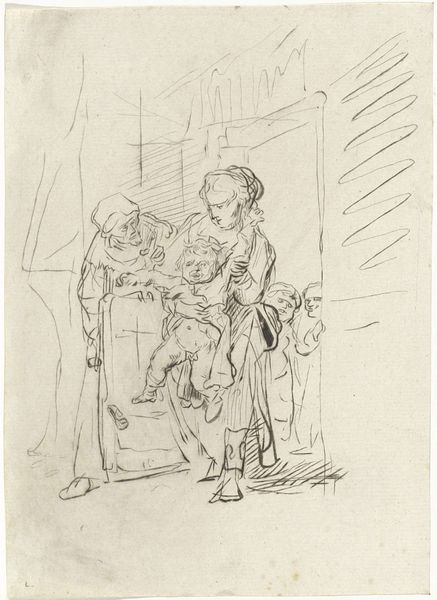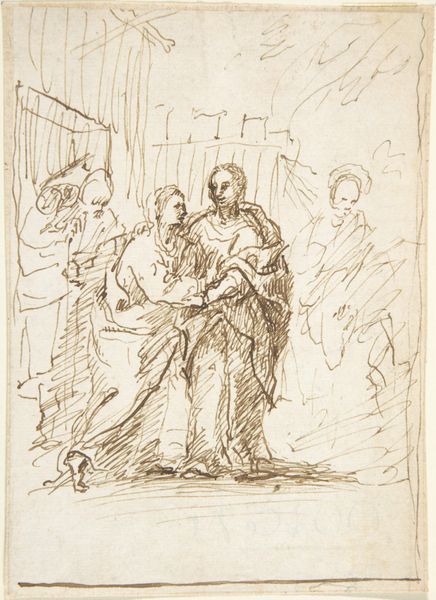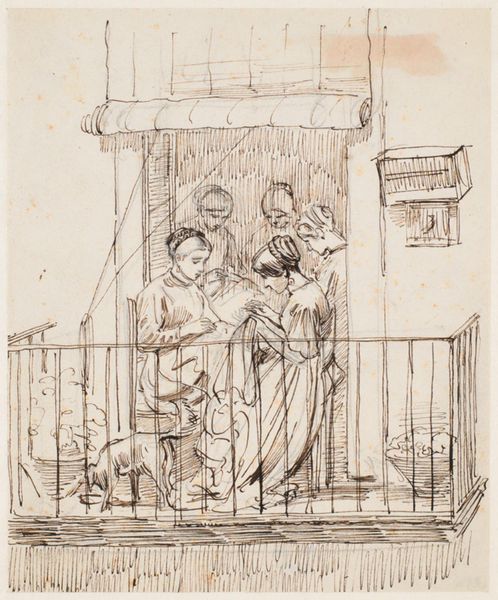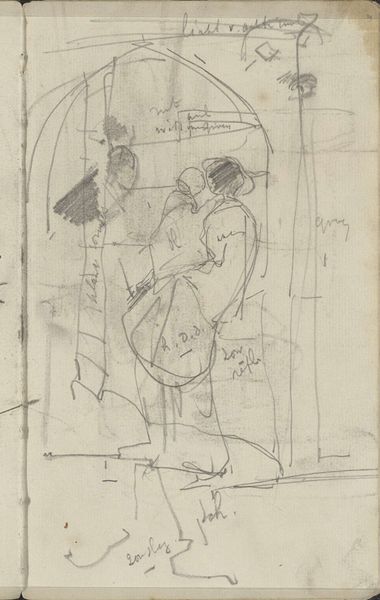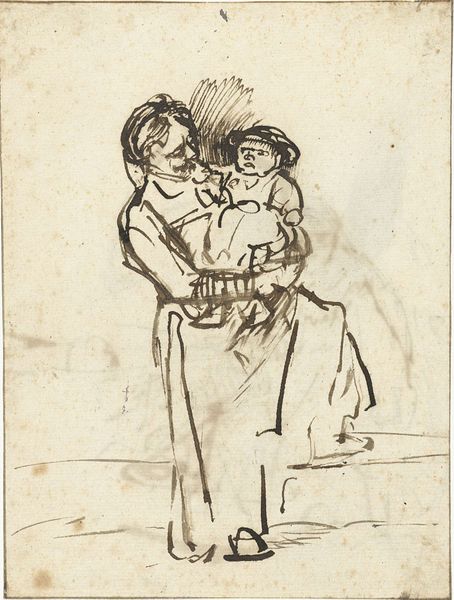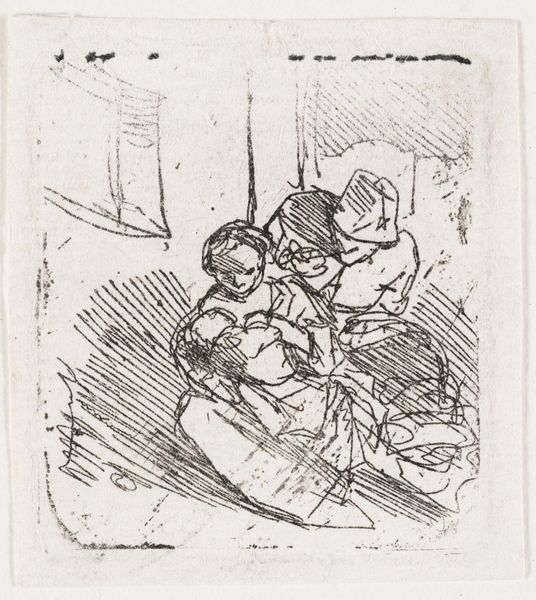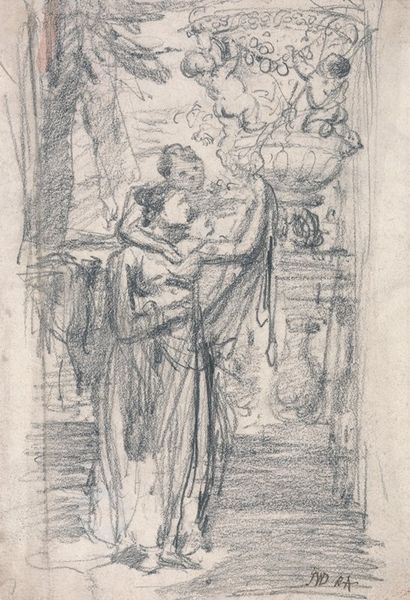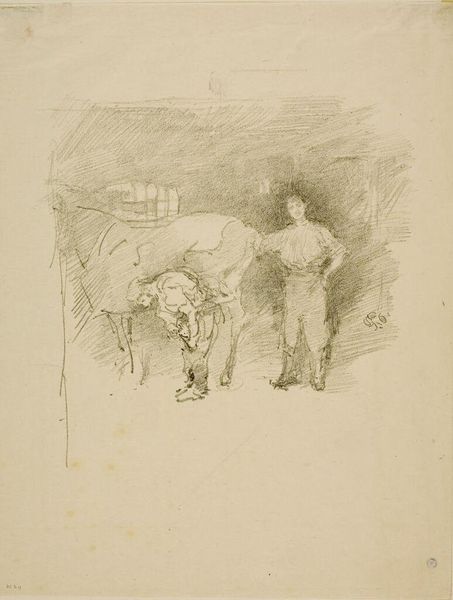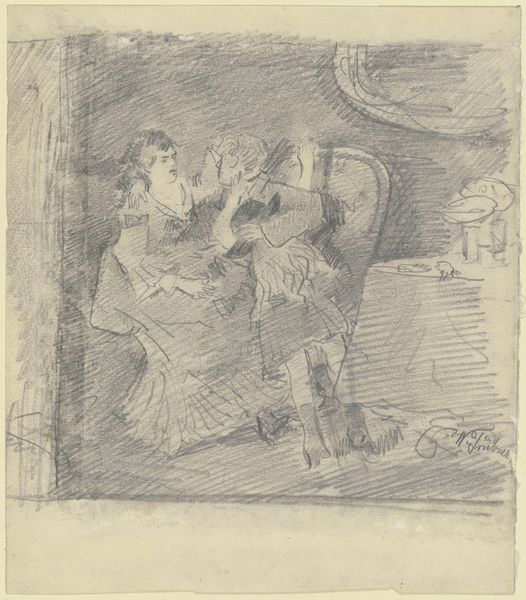
Dimensions: height 208 mm, width 144 mm
Copyright: Rijks Museum: Open Domain
Curator: This drawing, entitled "Weerspannige peuter" – which translates to "Defiant Toddler" – comes to us from the late 18th century, sometime between 1767 and 1780. It's unsigned, but held in the collection of the Rijksmuseum. Executed with pen, it captures a genre scene with notable Rococo influences. What are your initial impressions? Editor: Chaos. That’s the immediate word that springs to mind. This isn't some saccharine depiction of motherhood. You can feel the mother’s exhaustion and that child’s absolute refusal to cooperate. There's a real sense of lived experience. Curator: Indeed, and if we look beyond the obvious defiance, the scene presents us with age-old symbols of nurture intertwined with potential rebellion. The figures clustering to the side, seemingly attempting to placate the toddler, could suggest either a collective desire for harmony, or perhaps…a veiled critique of social pressure on mothers to perform tenderness? Editor: Absolutely! It reflects that age-old conflict, the clash between individual expression—even in a toddler—and the social expectations of obedience, especially for women expected to maintain decorum. You have to wonder about the expectations placed upon women in that period. Motherhood wasn’t—isn't—this idyllic thing. It’s fraught, exhausting, and often isolating. Curator: The very medium contributes to this raw feel. Pen, unlike smoother charcoals, feels immediate and unyielding. The sketchy lines, almost frantic, speak to a reality unfiltered and messy. What sort of emotional lineage do you sense in these lines? Does it strike you as modern or old? Editor: Both. There’s a timeless quality to it. Every generation of parents will recognize that exasperated look on the mother’s face. Yet, placing it within its historical context – Rococo's embrace of complexity over rigid formality— the drawing can be seen as somewhat revolutionary for its honesty. Rococo art, known for opulence and idealization, this artwork seems to dare to display reality without sugar-coating it. Curator: It brings to mind Dutch genre painting with its intimate scenes of daily life, though without that tendency towards moralizing. And beyond mere historical placement, the symbols within the home setting create layered readings about domesticity and rebellion—perhaps that little outburst has less to do with pure orneriness and more with resisting expectations in the most limited world in which the child functions? Editor: I agree, and this highlights something so central: children’s resistance isn’t some inherent flaw. It's often resistance to external constraints. Curator: Food for thought, isn't it? It has certainly altered my perception of this sketch. I'm left considering the tension between art historical classification and the raw truth of a fleeting moment. Editor: For me, this drawing reframes how we discuss resistance and compliance within a domestic sphere, highlighting generational expectations regarding behaviour. And just how long it has endured!
Comments
No comments
Be the first to comment and join the conversation on the ultimate creative platform.
